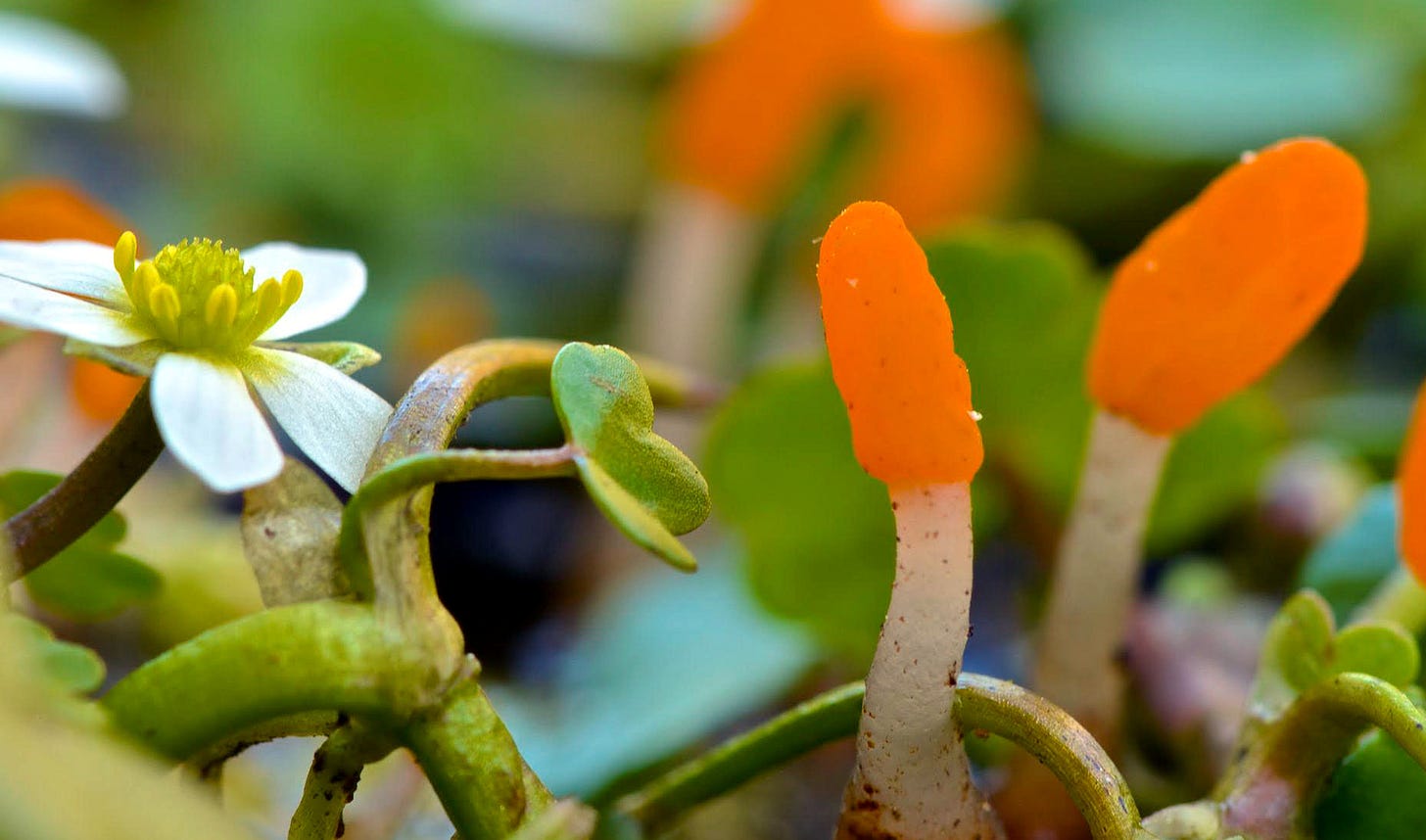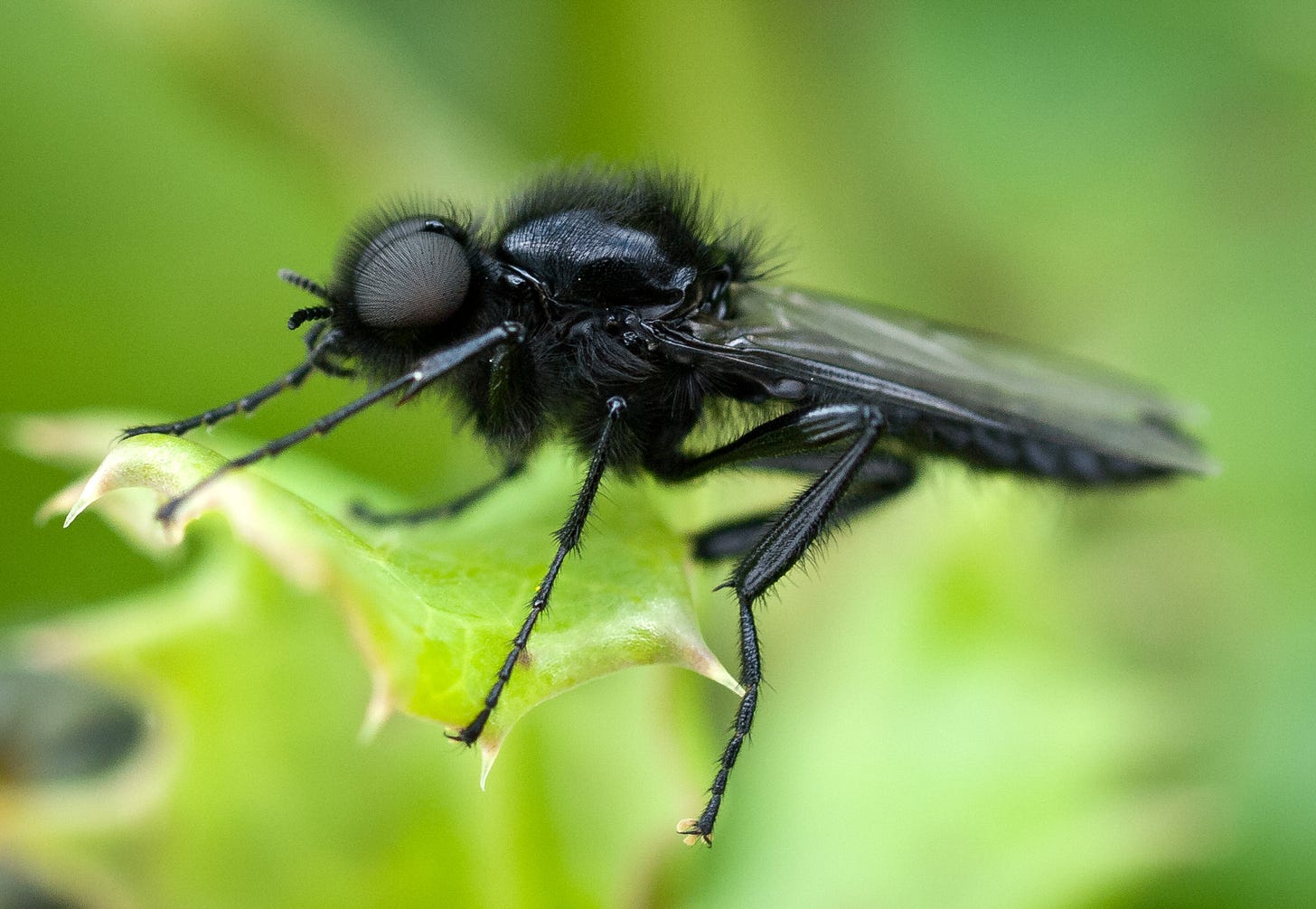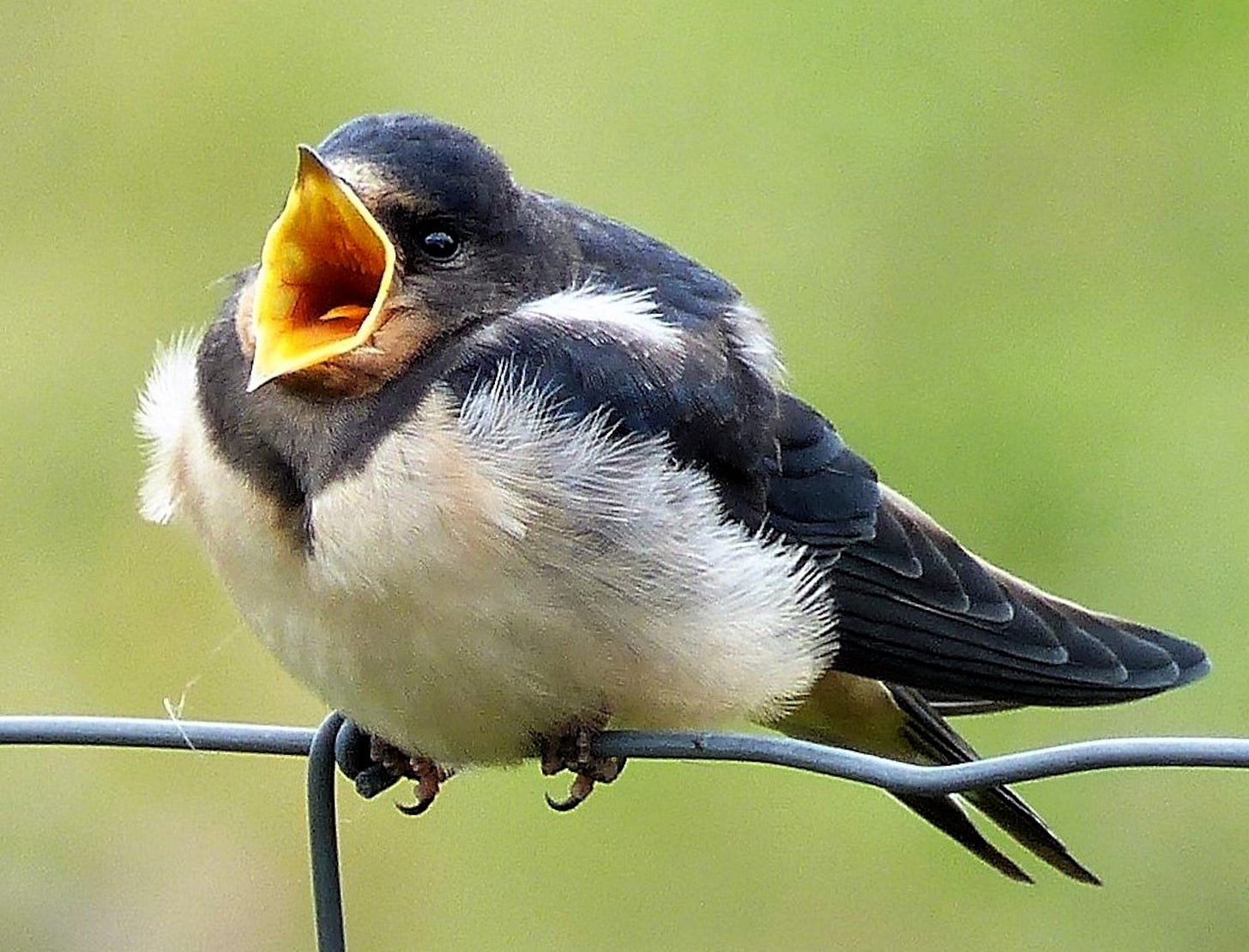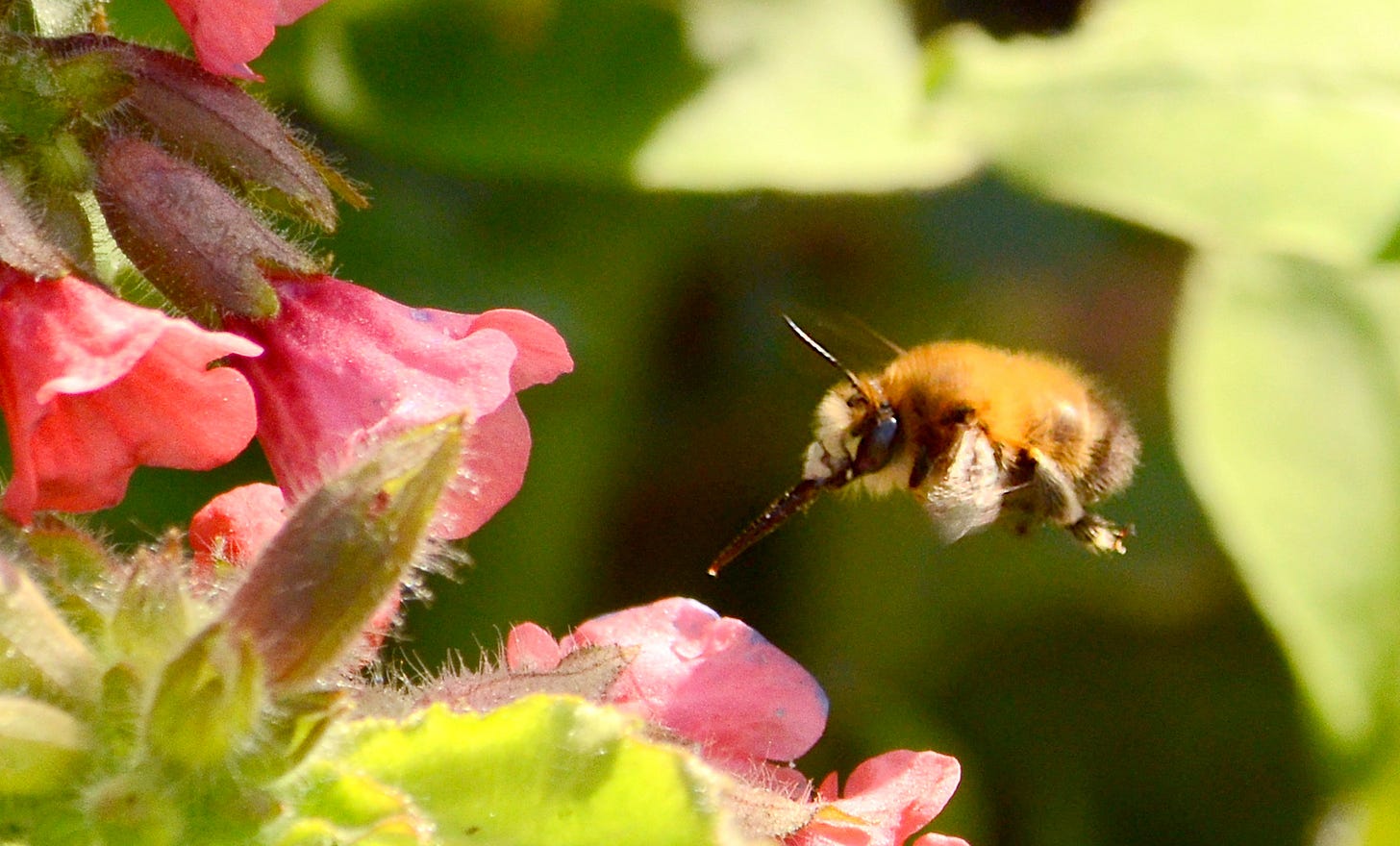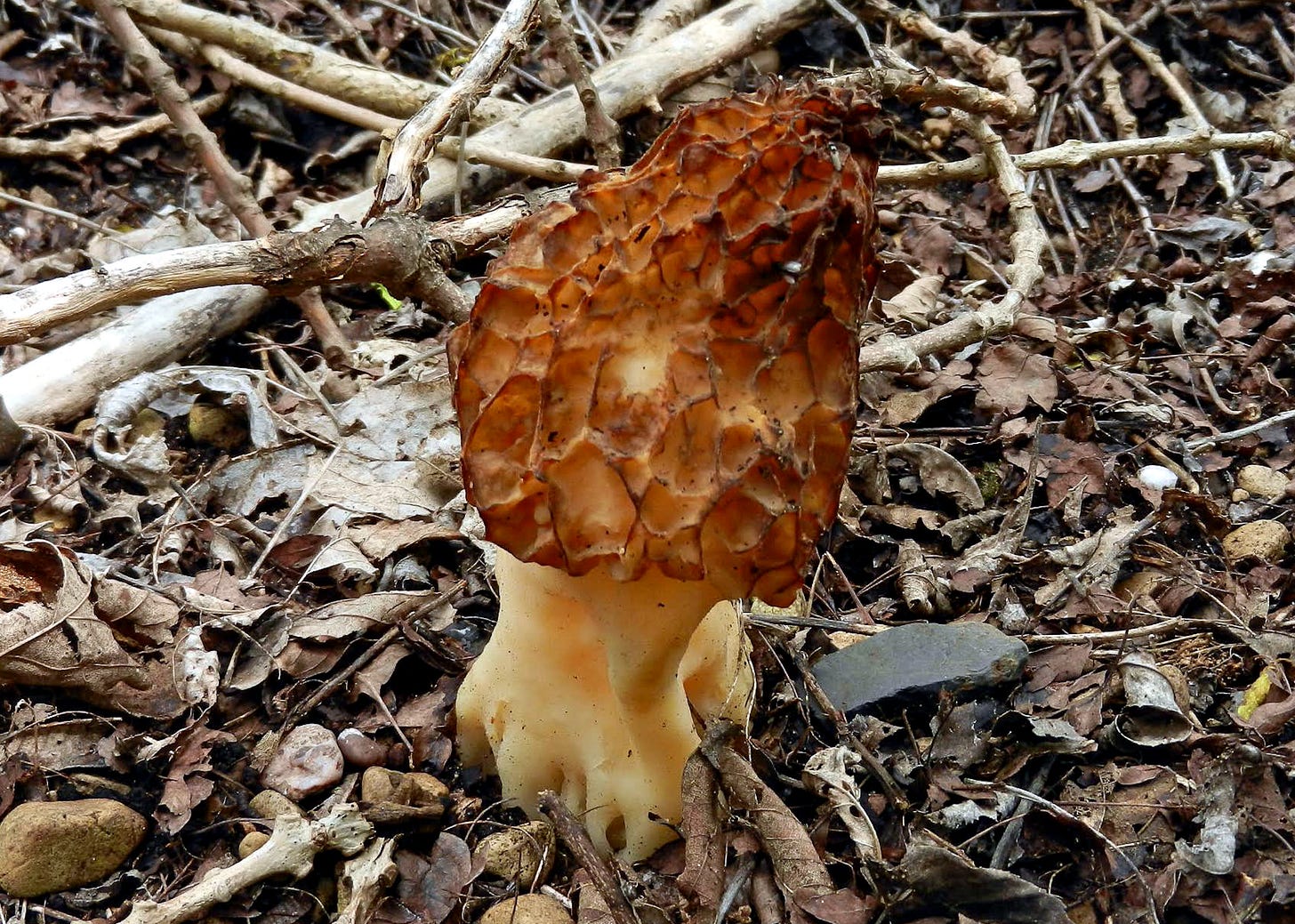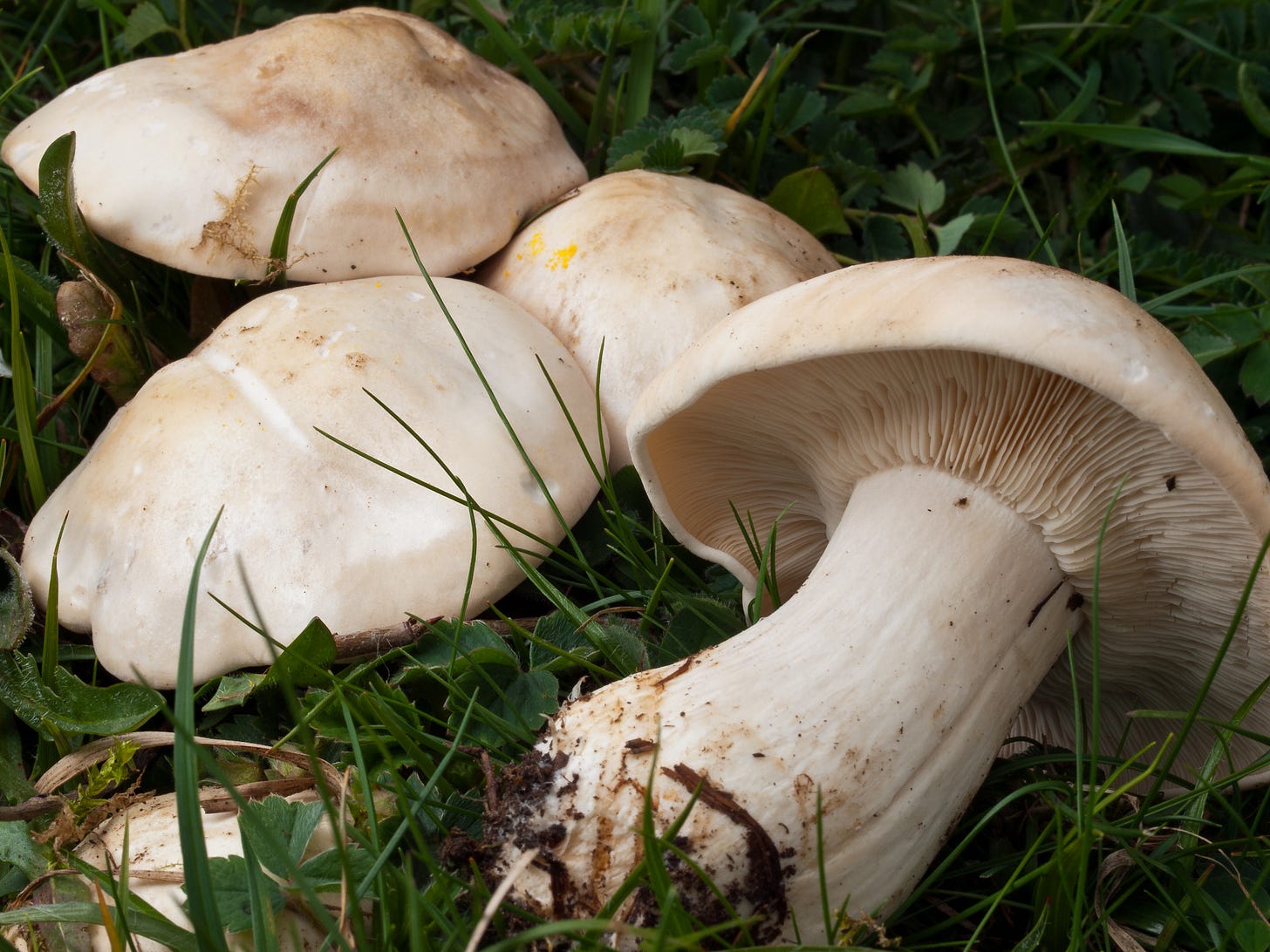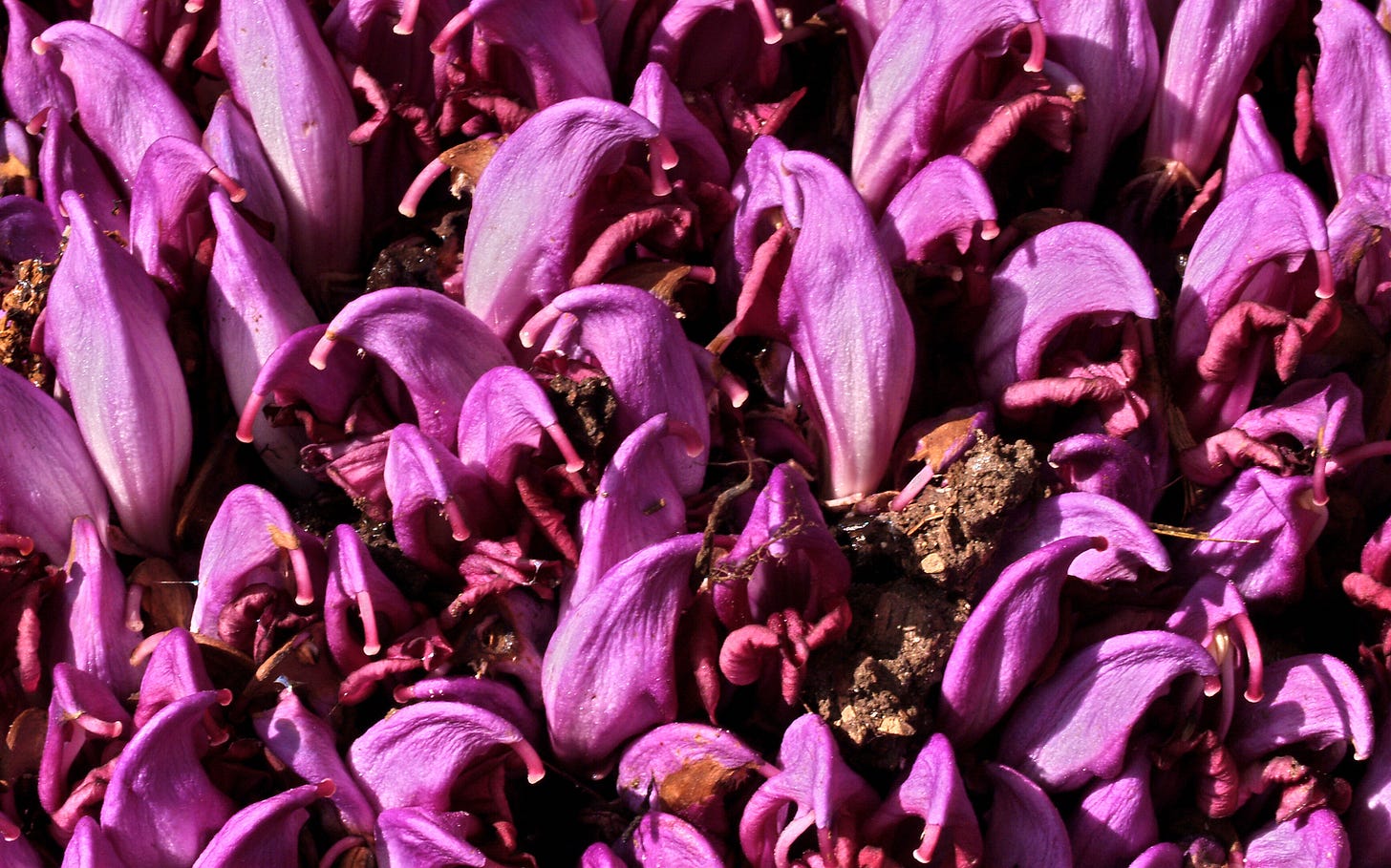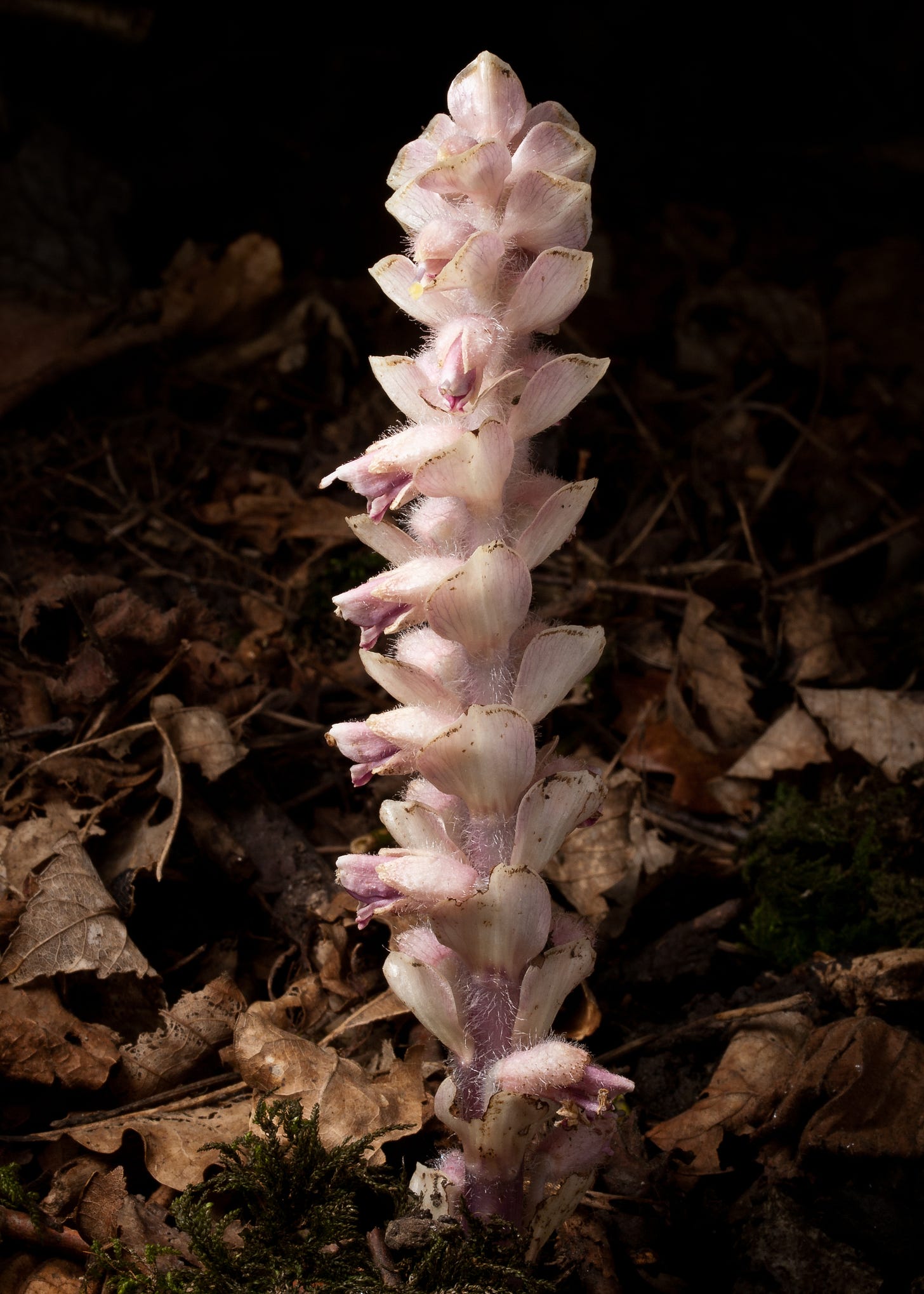What To Look For In April
Birdsong, African migrants, early woodland flowers, Hedgehogs, Sand Martins on the Don, the mad St Mark's Fly, the eerie Toothwort, Bog Beacons, and was that a Cuckoo?
Hello and welcome to our monthly guide to the wildlife and plants around the Outdoor City: please feel free to forward this monthly post to your friends and family, and do ask them to subscribe (below) to get these posts straight to their inbox. (Or download the free Substack app as it’s easier to read there.)
Thanks again to the wonderful folk of Sorby Natural History Society, the RSPB Sheffield Group, Sheffield Bird Study Group and Sheffield Museums for their help, expertise and brilliant photos.
St Mark’s Fly
St Mark’s Flies, which start to appear near the end of April, are hard to miss. They’re big and shiny black, and on warmer days seem to wander aimlessly in the air with their legs dangling down, as if they have no idea where they’re going.
They’re over a centimetre long, and got their official name because they often start their mad dance in the sky around the 25th April, St Mark’s Day. They like damp meadows, and can often be seen in pairs mating on the wing, which makes them even more erratic, and gave them one of their old country names: ‘Love Bug.’
Migrant Birds
Spring migrants are returning, to breed in the Outdoor City or just passing through along our river valleys or over the moors on their way back from Africa. Later in April look out for Swallows and House Martins.
House Martins are now on the endangered Red List after a recent and rapid decline in the UK, possibly caused by a drop in insect food due to wider use of pesticides and herbicide, or weather patterns related to climate change - House Martins now arrive in the UK on average 16 days earlier than in the 1960s.
Sand Martins
Sand Martins are already here, after moving into special nest boxes set up on the River Don near Brightside and Kelham Weirs (by Carbrook Street and Ball Street). Like a browner version of the House Martin, watch out for Sand Martins skimming above the Don anywhere between Kelham Island and Meadowhall.
Willow Warblers
Blackcaps and Willow Warblers, both migrant warblers, will arrive and start to sing any day now. Wadsley Common birder John Robinson reports: “One day I might just hear one lone Willow Warbler on the whole of the Common, and within a couple of days there will be dozens.”
Cuckoo
Can sometimes be heard on the moorlands west of Sheffield in early April, although the cuckoo call can sound remarkably like a distant dog barking too, says SBSG member David Wood.
Nowadays, Cuckoos are rarely seen or heard away from the moorland and moorland fringes (places like Burbage and Blackamoor). The Cuckoo is another Red List species due to rapid declines in population over recent decades, especially in England.
The British Trust for Ornithology has fitted tiny satellite tags to some Cuckoos to help understand if their movements between Africa and Europe could be a factor in their decline. Follow satellite-tagged Cuckoos at: https://www.bto.org/our-science/projects/cuckoo-tracking-project
Hedgehogs
Hedgehogs are emerging from hibernation and starting to appear at night in parks and gardens, and on garden webcams set up for the purpose. They’re now a vulnerable species in the UK due to the use of pesticides and loss of habitat.
Providing water and meaty cat and dog food might encourage them to visit as a supplement to their natural diet of slugs and other invertebrates. (But avoid the old favourite of bread and milk, as milk actually makes them ill).
Also make sure your garden pond has a means of exit for any unwary Hedgehogs visiting, and conservationists say don’t use slug pellets: hopefully a burgeoning Hedgehog population will eat lots of your slugs instead.
Butterflies & Dragonflies
In April, overwintering Peacock, Small Tortoiseshells and Speckled Wood butterflies will appear ready to begin their flight period.
And look for the Large Red Damselfly near ponds and slow moving waterways, and sometimes even by garden ponds too. One of the earliest dragonflies and damselflies to appear, Sheffield’s Large Red Damselflies are fairly common to the east of the city, on the canals in Attercliffe and Treeton Dyke, and should be around until August.
Hairy-footed Flower Bees
Hairy-footed Flower Bees are one of the first solitary bees to emerge in spring and are a great pollinator of early spring flowers. The males are ginger in colour with a creamy face and have feathery hairs on their legs (hence the name) while females are black with orange hairs on their back legs. Males patrol areas of tube-like flowers such as comfrey, dead nettles and primulas, chasing off other insects, with a darting flight and loud buzz.
Once they’ve mated they can be seen in parks, gardens and woodlands collecting pollen on their hairy legs to take to their nests in soft mortar or in compacted soil.
Spring Fungi
Plenty of strange fungi can be seen in spring, even though autumn is the traditional mushroom season. Look out for Bog Beacon (photo at top of this post) in shallow, slow flowing water, ditches and, of course, bogs where it recycles leaves while it grows tall stems with tiny red or yellow beacons at the top.
Morels can be found in chalkier woodlands, and can be eaten, but forest foragers are warned that their ‘fruitbody’ (the top bit, usually) is also a popular home for various bugs and insects.
St George’s Mushroom (which appears around St George's Day, 23rd April) sprouts up in grassy areas like meadows, roadside verges, and gardens. Impressive looking, it has a dubious smell yet can be eaten, but with care, as it also looks a little like the highly poisonous Deadly Fibrecap.
Toothwort
Toothwort is a ghostly-looking plant that appears briefly on the woodland floor in early April. Described by some as being like tiers of stained teeth, Toothwort is a parasite that extracts nutrients from roots of trees and shrubs, and so has no need for chlorophyll or green foliage. For most of the year the plant is hidden below ground but in spring it produces these clusters of vivid white mauve or purple, short-lived flowering shoots.
Toothwort is fairly scarce in Sheffield, but you may see it at Fox Glen (Deepcar), Graves Park Beck (Woodseats) and Glen Howe Park (Wharncliffe Side). There’s also a colony of Purple Toothwort in Sheffield Botanical Gardens, growing around the base of a Poplar near the driveway from Thompson Road.
Toothwort has been found in Woolley Wood and Ecclesall Woods in the past, but no-one has reported seeing it there for 30 years.
If you do come across any stained teeth growing from trees like Hazel, Alder, Willow or Elm this spring, Sorby Natural History Society ask you to note the Toothwort location and email Sorby Botanical Group via plantrecords@sorby.org.uk
Pre-Vernal Wildflowers
A prelude, really, to the spectacle of May. Towards the end of this month, we’ll see the start of the amazing early spring (pre-vernal) wildflowers of the Outdoor City’s woodlands, which begin flowering in the brief gap between the warming of the soil in early spring and the woodland trees shading out the sunlight as the canopy opens into full green leaf.
Here’s a photo of the little-known Bridle Wood in the Moss Valley by regular contributor and brillant wildlife photographer Roger Butterfield, showing Greater Stitchwort and Bluebells.
Thanks for reading. If you’ve enjoyed this piece, please help me out by becoming a subscriber, just by adding your email below.
And if you’re now a regular reader, and can afford £4 a month, switching to paid is simple and secure (via the international Stripe system) and will help me pay the bills and keep these posts coming!



